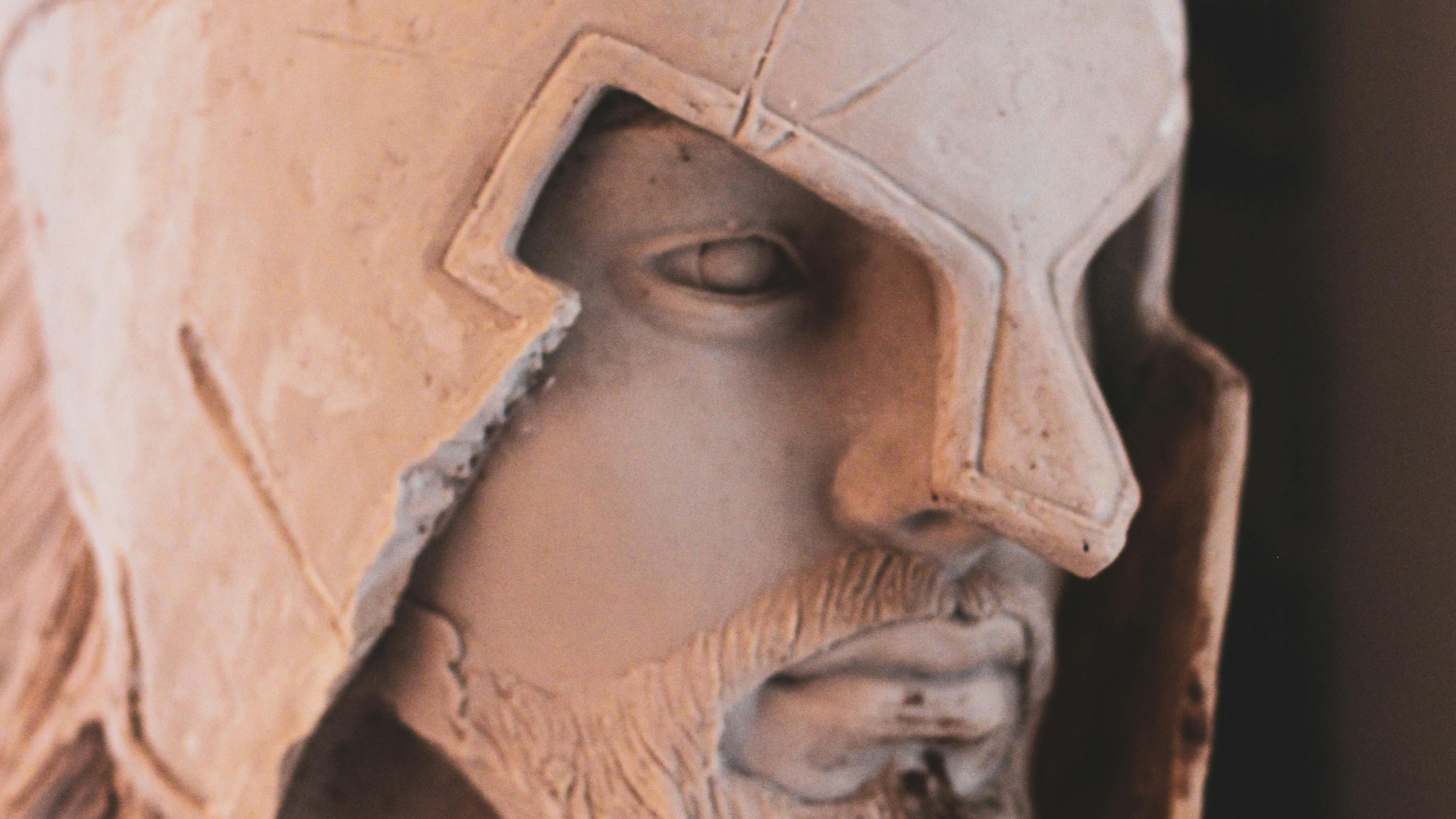
Take a look at our newest merchandise
For hundreds of years, warriors from numerous cultures have explored the psychological and emotional elements of fight. From the measured calm of the samurai to the strategic brilliance of generals like Solar Tzu, historical warriors understood that victory was as a lot concerning the thoughts because the physique.
At present, trendy psychology more and more validates these insights, providing an interesting intersection of historic knowledge and modern science.
1. The Warrior’s Mindset: Focus and Presence
Historical warriors emphasised the significance of staying current. Miyamoto Musashi, the famed Japanese swordsman, wrote in The Guide of 5 Rings:
“It’s essential to perceive that there’s a couple of path to the highest of the mountain.”
This adaptability is rooted in mindfulness—a follow broadly studied in trendy psychology. Mindfulness entails staying grounded within the current second, lowering nervousness about future outcomes or regrets over previous choices.
Research have proven that mindfulness reduces stress, improves cognitive flexibility, and enhances efficiency beneath stress. Particular forces, athletes, and even surgeons now make use of mindfulness methods to keep up composure in high-stakes environments, echoing the main target historical warriors honed by means of meditation and disciplined follow.
2. Resilience Beneath Strain: Classes from Stoicism
Marcus Aurelius, the Roman Emperor and Stoic thinker, taught the precept of embracing adversity with calm resolve. He famously wrote:
“You might have energy over your thoughts—not exterior occasions. Notice this, and you’ll discover energy.”
Trendy psychology acknowledges this as cognitive reframing—the power to reinterpret challenges as alternatives for progress. Resilience analysis highlights that an individual’s mindset usually determines their capability to endure hardship. Historical warriors, educated to see battle as a take a look at of character, embodied this precept lengthy earlier than psychologists formalized it.
Methods equivalent to stress inoculation coaching (SIT), which expose people to manageable ranges of stress to construct tolerance, parallel historical strategies of getting ready for battle by means of rigorous coaching and managed publicity to adversity.
3. Stream States and the Zone
Warriors throughout cultures, from the samurai to the Spartan hoplites, spoke of a state of heightened consciousness throughout fight—a fusion of thoughts and physique the place motion flowed effortlessly. Trendy psychology calls this phenomenon a “movement state.”
Coined by psychologist Mihaly Csikszentmihalyi, movement describes moments when people change into absolutely immersed in an exercise, shedding self-consciousness whereas acting at their peak. Martial artists usually expertise movement in sparring or kata, the place muscle reminiscence, psychological readability, and focus align completely.
Psychological research reveal that movement states are achievable when duties are difficult but inside one’s talent stage, accompanied by clear objectives and rapid suggestions. These rules mirror the disciplined follow of historical warriors, whose mastery allowed them to carry out intuitively beneath stress.
4. The Position of Rituals in Psychological Preparedness
Rituals have been integral to the lives of historical warriors, serving to calm the thoughts, instill confidence, and reinforce a way of goal. Samurai carried out meditative tea ceremonies; Spartan warriors ready for battle with shared chants and sacrifices.
Trendy psychology understands these rituals as a type of psychological priming. Rituals can cut back nervousness by creating a way of predictability and management. A examine from Harvard College discovered that performing rituals earlier than a hectic activity considerably lowered contributors’ stress ranges and improved efficiency.
Athletes, army personnel, and high-pressure professionals use related methods, from pre-game routines to visualizing success, to arrange for challenges—practices rooted in historical warrior traditions.
5. Emotional Regulation and the Artwork of Management
Solar Tzu famously suggested:
“In case your opponent is temperamental, search to annoy him.”
This assertion underscores the significance of emotional regulation, each in fight and in life. Warriors educated to stay calm and unshaken, figuring out that feelings like anger or worry may result in deadly errors.
Trendy neuroscience has revealed the mechanics behind this historical knowledge. The amygdala, the mind’s worry and emotion heart, can hijack rational pondering throughout high-stress conditions. Methods like deep respiration, visualization, and progressive muscle leisure—practices acquainted to martial arts traditions—assist regulate the amygdala’s response, preserving the prefrontal cortex (the rational decision-making heart) in management.
6. The Energy of Visualization
Historical warriors usually visualized victory earlier than participating in fight. The Spartans envisioned glory and honor, whereas Zen-trained samurai visualized a duel’s consequence to anticipate their opponent’s strikes.
Trendy psychology refers to this as psychological rehearsal, a robust instrument for enhancing efficiency. Research on athletes and army personnel present that visualization prompts the identical neural pathways as bodily follow, enhancing abilities and confidence. This precept is broadly utilized in trendy coaching applications, from Olympic athletes visualizing their routines to troopers mentally rehearsing complicated maneuvers.
7. The Connection Between Philosophy and Psychology
Many historical warriors adopted philosophical techniques that supplied an ethical and mental framework for his or her actions. Whether or not it was the Stoicism of Marcus Aurelius, the Taoism of Lao Tzu, or the Bushido code of the samurai, these philosophies emphasised self-control, humility, and the pursuit of mastery.
Trendy psychology aligns with these teachings by means of ideas like intrinsic motivation and self-determination idea (SDT). SDT means that people are most fulfilled once they pursue objectives aligned with their values, search mastery, and keep autonomy—rules deeply embedded within the warrior traditions.
The Timeless Knowledge of Warriors
The psychology of fight, as practiced by historical warriors, continues to resonate in trendy science and society. Their insights into focus, resilience, movement, and emotional management provide timeless classes for navigating the challenges of the trendy world.
By integrating the knowledge of Solar Tzu, Marcus Aurelius, and different warrior-philosophers with the findings of up to date psychology, we will domesticate a mindset of energy, readability, and flexibility. As the soldiers of outdated may remind us, the best battles are sometimes fought not on the battlefield, however inside ourselves.














